Wakizashi Complete guide to learn about this famous sword
Wakizashi: Everything You Need To Know
Throughout history, the Samurai used many different weapons and tools. Some of them were ceremonial, some were for practical combat. Most people are familiar with flashier weapons like the Uchigatana, which has become a cultural icon. Fewer people know about the battle weapons like Kodachi and Tachi. Secondary weapons like Wakizashi and Tanto pretty much always stay in the background.
In essence, Wakizashi is a shorter version of the Uchigatana. The difference between a Uchigatana and a Wakizashi is similar to that between a longsword and a shortsword.
Wakizashi dominated the Edo period primarily because of its socio-political landscape. The strictly enforced class system also played a role in the popularity of the Wakizashi. The process of crafting a Wakizashi is also a complicated affair that requires skilled swordsmiths and the finest refinement materials. In this article, we will cover all topics related to Wakizashi.
Table of Content
- What Is Wakizashi?
- Types of Wakizashi
- Wakizashi Mounting
- Special Things About Wakizashi
- Occasions To Use Wakizashi
- Common Material For Wakizashi
- Difference Between Wakizashi And Katana
- Difference Between Wakizashi And Tanto
- Wakizashi In Martial Art
- Famous Wakizashi In History
What Is Wakizashi?

The Wakizashi (脇差) is sort of like a short Katana but is also different in some ways. It is a companion weapon to the standard Katana and features a curved blade. It is believed that Wakizashi originated in the early Edo period, but similar weapons also show up much earlier in history.
Wakizashi was primarily used for indoor fighting. The shinobi of the Sengoku period also carried similar weapons because they were easier to conceal and carry. However, even The Chonin class merchants could have such blades.
Wakizashi features

Wakizashi has basically same elements that a katana has, including the Habaki, Tsuba, Tsuka. The tang of a Wakizashi is sometimes shorter but it’s still a full tang. The effort that went into making a Wakizashi is in no way inferior to that of crafting a Katana.
Wakizashi carried by the Chonin class or any other commoner are usually less intricate than the ones carried by samurai . Usually, Samurai's wakizashi were built with the same theme and design as their Katana. But since the commoner did not carry Katana, the Wakizashi they had were standalone weapons, and they could be in any theme and quality.
How Long Is A Wakizashi?

Wakizashi’s blade length can vary widely from 30 cm all the way to 60cm. When it reaches above 50 cm, its length gets pretty close to a standard Uchigatana. In general, you can divide Wakizashi’s size into three types: O-Wakizashi (Big wakizashi), Chu-wakizashi (middle wakizashi), Ko-wakizashi (Small wakizashi).
In the late Sengoku and early Edo periods, there weren’t any standard blade sizes for the Wakizashi. So craftsmen made blades in widely varying lengths. But the commoners in the Edo period would prefer not to use longer Wakizashi because such swords could be mistaken for a katana, which they are not allowed to carry. They would instead like to use the shorter Wakizashi or even a Tanto for self-defense.
Types of Wakizashi:

1. O-Wakizashi 大脇差
Wakizashi with blade length from 54.5cm to 60.6cm is called O-Wakizashi. The O-Wakizashi is the longest type of Wakizashi, about the same size as standard katana. The Samurai used such Wakizashi to put down public unrest. The Dōshin class police force during the Edo period, used such O-Wakizashi alongside their standard weapons like the Jitte.
2. Chu-Wakizashi 中脇差
The chu-Wakizashi ranged from 40 to 54.5 cm and were considered medium-sized Wakizashi. These were more commonly carried by the Samurai of the Edo period. Daisho sets often featured matching Uchigatana and Chu-Wakizashi, especially during the early Edo period.
3. Ko-Wakizashi 小脇差
Wakizashi with blade length less than 40 cm long is called Ko-Wakizashi, and are often compare to longer Tanto. Such Wakizashi blades are most suited for indoor self-defense, and many unarmed-martial arts evolved to use these blades combined with existing styles for added lethality and effectiveness.
Wakizashi Mounting
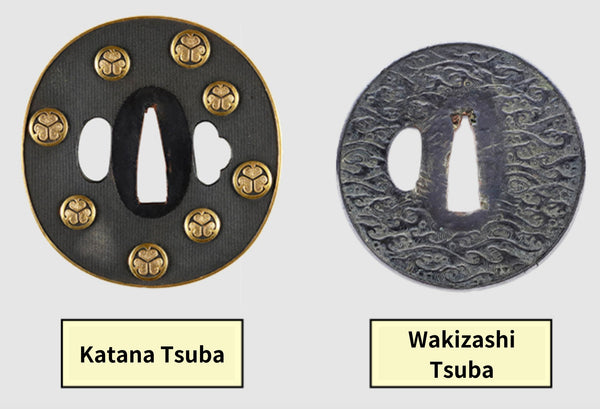
Wakizashi mounting (Koshirae) is similar to Katana. they all have Saya, Tsuba, Kashira, Fuchi, and Tsuka, making it hard to distinguish between them at a glance. However, the mountings of the uchigatana included a kozuka (a small knife) and a kogai (a hair arranging tool), while the wakizashi only had a kozuka.
The tsuba of the uchigatana featured several holes: the central nakago-ana (blade hole), a semicircular kozuka-bitsu-ana (hole for the small knife), and a kogai-bitsu-ana (hole for the hair arranging tool). In contrast, the tsuba of the wakizashi only had a hole for the kozuka.
Wakizashi can also be stored in a shirasaya (白鞘) to keep the blade in good condition for a long time.
Special Things About Wakizashi
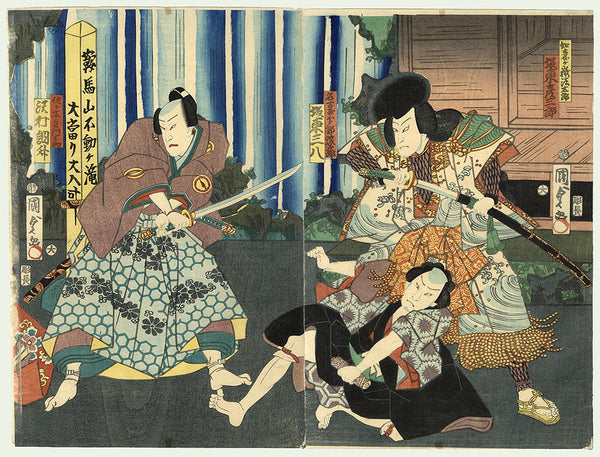
The peaceful Edo period was only peaceful because there were strict laws in place. One such law dictated that all samurai must carry two Katanas. The two-sword law popularized Daisho- which means using a set of one long and one short Katanas.
One of the other things that the Tokugawa Shogunate mandated was the strictly enforced caste system. Due to the caste system, only the Samurai could carry a full-sized Uchigatana openly. Publicly carrying such a blade could lead to various punishments for the peasants and merchant class.
However, the law did not extend to Wakizashi because it was not a full-sized katana. Everyone could use it. And so they did. In the Edo period, Wakizashi became the most widely spread weapon because anyone who could afford one had one.
In that era, the Samurai could slash civilians with legal authority in certain situations. It was due to a system called Kirisute Gomen (斬捨御免). For honor’s sake, they would not fight unarmed individuals. In such cases, the samurai would unsheath their Wakizashi and give it to the civilian before drawing their Katana for an impromptu duel.
Occasions To Use Wakizashi
Wakizashi may be a secondary weapon, but it saw more action than Uchigatana in the Edo period. That was primarily due to peacetime. There are many situations where you would want to use a Wakizashi over an Uchigatana and you may prefer using both in tandem.
Below are some such situations:
1. As Backup/Off-hand Weapon
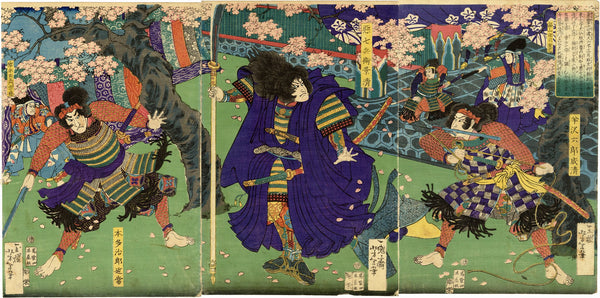
Wakizashi has many practical functions in armed combat in Samurai warfare. In most cases, it served as a secondary weapon for the Samurai, which they would use when they lost or broke their Katana mid-fight. It’s a solid backup option in such scenarios.
Many people in the Late Sengoku and Edo periods also used Wakizashi and their Uchigatana. Such practice became especially popular because masters like Miyamoto Musashi perfected the two-sword style, who is also a pop-culture icon at this point.
2. Indoor Combat
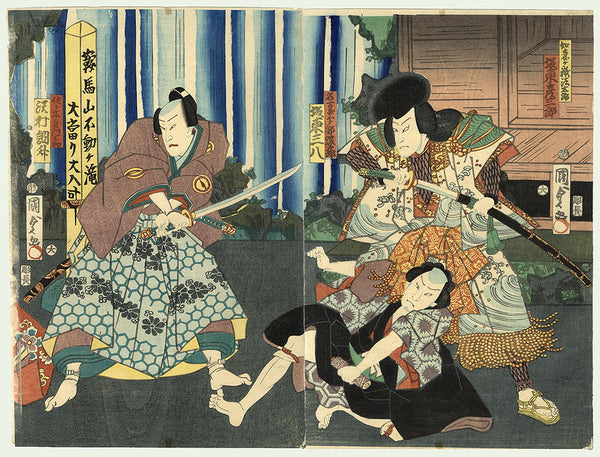
Fights within a lord’s castle in Shogunate Japan were not uncommon. And the Samurai in the Edo period often left their Uchigatana with their servant when entering indoors or placed them in designated locations. In such situations, Wakizashi were the only weapons they could rely on when things took ugly turns- which they often did.
The size of the Wakizashi made it a much more versatile weapon for indoor combat, and many martial arts incorporated it into their fighting style. However, most of them were focused on drawing as little blood as possible because drawing blood in a lord’s castle was disrespectful.
3. Weapon For Non-Samurai
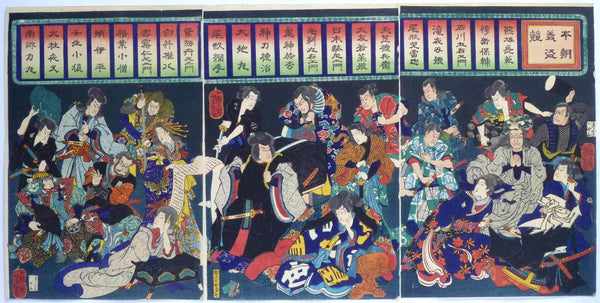
Edo period Japan was distinctly divided into different social hierarchies. Samurai were directly below the Daimyo, and below the Samurai were three 3 classes of peasants. First were the commoners, then the artisans, and finally, the merchants.
Carrying Katanas or Long bladed weapons was not permissible for anyone below the Samurai class. That was Tokugawa Ieyasu’s brilliant idea for preventing civil unrest and potential uprisings. And it also made rising through the social hierarchy impossible.
However, the law only prevented the commoners from carrying full-sized katanas. Wakizashi was still allowed, so pretty much anyone below the samurai class wanting a self-defense weapon would choose to get a Wakizashi.
4) Kirisute Gomen (斬捨御免)

Kiri-Sute Gomen is the law that allows the Samurai to slash any commoner if they disrespect them. Before performing the slash with their Katana, the Samurai would often hand the peasant their Wakizashi as a show of honor.
But it was one of the systems that Samurai rarely made use of because a government investigation would follow any such action. So Samurai couldn’t just do such a thing willy-nilly.
Common Material For Wakizashi

Bladesmiths in Japan historically used Tamahagane for crafting blades for combat. Tamahagane is a type of iron sand and can vary between low and high quality. Pre-Edo period swordsmiths used Tamahagane primarily for the war weapons of the Samurai.
Swordsmiths also use carbon steel and Manganese steel for crafting Wakizashi, but such practices are relatively modern. Spring steel is also a relatively common material for crafting Wakizashi. Modern bladesmiths can also use T10 steel for the delicate decorative Wakizashi.
Tamehagane Wakizashi is still made in modern-day Japan, but only licensed bladesmiths can craft them within Japanese borders. These swords are also just as expensive as authentic Katanas.
Difference Between Wakizashi And Katana
Katana is an umbrella term that applies to various battle swords used by the Samurai. What most people call Katana is actually the Uchigatana that was popularized during the Edo period. These blades are significantly different from Wakizashi in terms of how and when they were used.
1. Size
The most noticeable difference between a Uchigatana and Wakizashi is the size. While a Uchigatana is typically 60 to 80 cm, the Wakizashi can be as short as 30 cm to up to 50 cm. Comparatively, the Tachi is even longer, averaging 70-80 cm.
2. Usage
Wakizashi was a secondary sword, and it was designed to be used one-handed. That’s why most Wakizashi have shorter handles compared to a Uchigatana. It was also primarily used indoors, where Uchigatanas were somewhat unwieldy. The Uchigatana of the Edo period were weapons for official armed combat.
The Uchigatana was the primary weapon for melee combat in the peaceful Edo period, but the Tachi, Nodachi, and Kodachi were more used in the pre-Edo period. Wakizashi were seen as less important during those times because wars were fought on horseback, and longer weapons were more effective.
3. Historical Appearance
Wakizashi appeared in Japanese history around the 14th to 15th century. The Muromachi period was the first time Wakizashi became popular, but they weren’t as widely used until the Edo period. Uchigatana only became popular during Edo, but they started showing up around the 15th century.
4. Mounting
There’s usually no noticeable difference between Wakizashi mounting and Katana mounting. They both use similar decorative Sayas and are placed the same way. The only difference is that Wakizashi typically do not have a Kogai, but longer Katanas do.
Difference Between Wakizashi And Tanto
People are often seen mistaking Wakizashi and Tanto because both were short weapons.
1. Size and Shape
Tanto and Wakizashi both have a distinct size range. Tantos are daggers and are typically never longer than 30. Depending on the purpose, then they can be as short as 10 cm or less. Wakizashi is never shorter than 30 cm. They also vary in shape. Tanto is almost straight, whereas the Wakizashi is curved like the Uchigatana.
The tanto handle is shorter and sometimes does not have elaborate wrappings like that of a Uchigatana or Wakizashi. They also lack a handguard (Tsuba), but some modern iterations feature one. Tanto also had a thinner blade angle, making it sharper than Katana and Wakizashi. Assassins and Ninjas during the Sengoku period favored such weapons.
The traditional kitchen knife of Japan heavily inspires the base design of the Tanto. Featuring a medium-sized blade with a straight profile. Such designs made Tanto a very sharp weapon. The small size of the Tanto also ensured that it was highly durable.
2. Usage
Tanto had a variety of uses, both as self-defense and as offensive weapons in war. The smaller size of the Tanto also made it an excellent concealed weapon for assassinations. The daughters of the Samurai clan carried a special kind of Tanto for self-defense.
Harder and slightly longer Tanto was used as stabbing weapons in the battle against armored opponents. Samurai armor was primarily made of many small metal and leather plates, which made it great against slashing attacks, but there are many gaps, and a good stab from a tanto could do significant damage.
Wakizashi In Martial Art
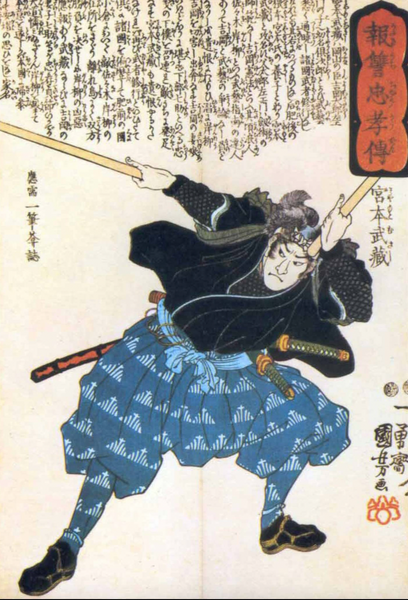
The act of using two Katanas dates back hundreds of years before the Edo period. It was not explicitly developed during the Edo period when Daisho became popular.
Many Japanese traditional sword styles have two sword skills. But most schools agree on using just one primary weapon during battle.
1. Enmei ryu
Enmei Ryu is a Martial Art style that uses both a main-hand Katana and a secondary Wakizashi. The style involves using one blade in each hand. So the Uchigatana used for this style was relatively shorter. But Still longer than the accompanying Wakizashi.
Enmei Ryu is one of the oldest sword styles in Japanese martial arts. For the longest time, people thought it vanished in the annals of history. It was the sword style Miyamoto Mushashi trained in earlier in life. Mushashi’s famous Nito-ryu kenjutsu is found in many parts of Enmei Ryu.
2. Niten Ichi-Ryu 二天一流
Niten Ichi-Ryu is the most popular sword style in recent years. People recognize it because the style is intimately tied to Miyamoto Musashi. Musashi’s fame is far-reaching, so many movies and literary works feature his signature sword style Niten Ichi-ryu.
The Niten Ichi-ryu roughly translates to “heaven and earth as one.” Musashi is the one who popularized the two sword styles in Japan with his exceptional skills at handling a Katana and a Wakizashi simultaneously.
Nito-Ryu is an integral part of this sword style, primarily focusing on using two blades. In contrast, other contemporary martial arts in Japan that had two-sword styles did not make it their primary focus. A lot of people are under the misconception that Miyamoto Musashi invented the two-sword technique.
But the truth is, such styles existed centuries before he was even born. What Miyamoto Musashi did was make the two-sword style popular. People only treated it as a practice style before that.
Famous Wakizashi In History
脇差 銘 兼定 (Wakizashi Mei ‘Kanesada’) was made by the swordsmith ‘Kanesada’ (kanesada) who was active in Mino Province (currently the southern part of Gifu Prefecture).
There are several swordsmiths who inscribed their swords with ‘Kanesada’, the most famous of which is the second generation Kanesada, known by the nickname ‘Nosada’. The second generation Kanesada is known for producing many famous swords with excellent sharpness, and was loved by famous warlords such as Oda Nobunaga’s retainer ‘Akechi Mitsuhide’ and the warlord known by the nickname ‘Human Warrior’ ‘Mori Nagayoshi’.”

脇差 無銘 貞宗 Wakizashi No mei Sadamune was created by the swordsmith “Hikoshiro Sadamune” (Hikoshiro Sadamune) who was active in Sagami Province (now Kanagawa Prefecture) from the late Kamakura period to the Northern and Southern Dynasties period.
The creator, Hikoshiro Sadamune, is a representative swordsmith of the Soshu tradition. Although there are no existing signed works, many of his works have been designated as national treasures and important cultural properties.

Conclusion
In short, the history of Wakizashi goes deep, and many famous figures used such weapons. They are like shorter katanas and were the primary weapon of choice during combat in confined spaces. Such swords were famous during the Edo period.
Due to it's rich history and sheer novelty, many katana enthusiasts want to own their very own Wakizashi. That's we offer custom built Wakizashi. So, if you're interested in owning one yourswlf, order today.





















